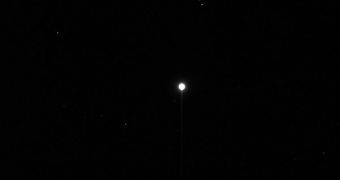An ion engine probe operated by the American space agency in the Inner Asteroid Belt between the orbits of Mars and Jupiter has just seen its target, the largest asteroid in the solar system, for the first time ever.
The spacecraft, called Dawn, is scheduled to reach Vesta a couple of months from now, and to enter orbit around it. The purpose is to study this space rock in great detail, as experts believe it may be a planetesimal object.
What this means is that – if given the necessary conditions – it could have developed into a rocky inner planet such as Mercury, Venus, Earth or Mars. Measurements conducted thus far revealed that it does exhibit some level of stratification within.
This means that it does have a core-like structure at the center, a layer similar to a mantle in the middle, and a solid crust at the exterior. Studies conducted with Dawn are scheduled to reveal more details about this extremely interesting feature.
Just recently, the probe saw the asteroid for the first time, and sent a raw, unprocessed image of it back to mission controllers at the Pasadena, California-based NASA Jet Propulsion Laboratory (JPL).
When Dawn enters orbit around Vesta, on July 16, the asteroid will be located some 188 million kilometers (117 million miles) away from Earth. Right now, the space probe is about 1.21 million kilometers (752,000 miles) away from Vesta, and closing fast.
“After plying the seas of space for more than a billion miles, the Dawn team finally spotted its target. This first image hints of detailed portraits to come from Dawn's upcoming visit,” explains expert Carol Raymond.
She holds an appointment as the JPL Dawn deputy principal investigator. The expert explains that Vesta appears as a lit more than a dot on this image. Dawn's instruments have been recently activated for a slew of tests and validation processes.
Until now, space- and ground-based telescopes managed to observe the 530-kilometer (330-mile) asteroid only in coarse detail. However, Dawn is scheduled to conduct the first up-close-and-personal observations of the protoplanet.
“To enter orbit, Dawn must match the asteroid's path around the Sun, which requires very precise knowledge of the body's location and speed,” JPL experts say in a press release.
“By analyzing where Vesta appears relative to stars in framing camera images, navigators will pin down its location and enable engineers to refine the spacecraft's trajectory,” they conclude.

 14 DAY TRIAL //
14 DAY TRIAL //